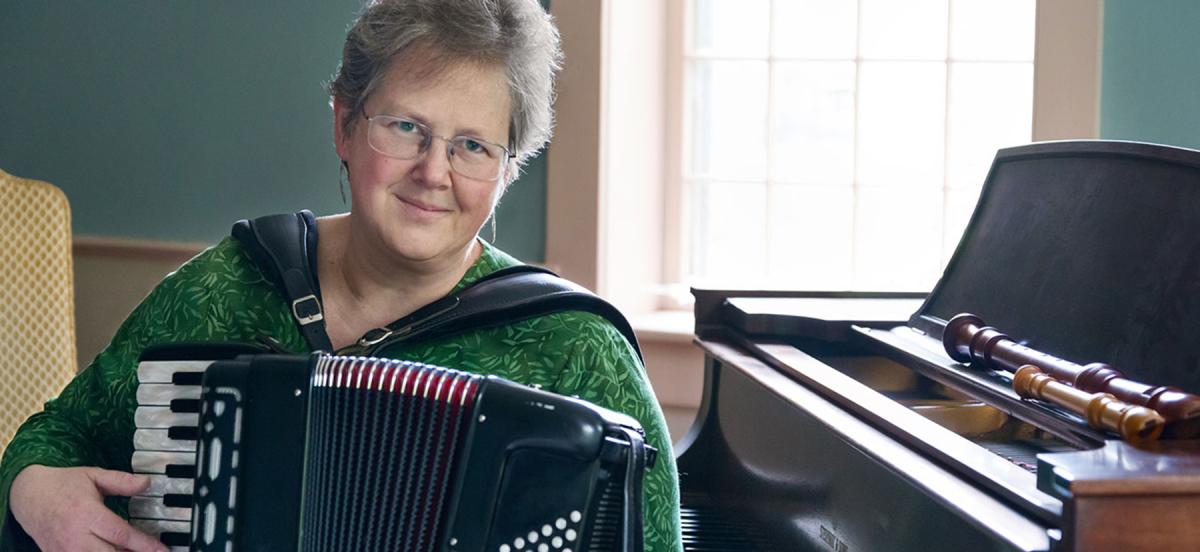Music by Day, Music by Night

Carol Compton '84. Photo by Nancy Belluscio.
Details
When Carol Compton '84, who plays the accordion, recorder, and piano, isn't busy serving as the director of education programs at Vermont's Brattleboro Music Center, she's playing music at English country or contra dances in New England and beyond.
Carol Compton '84 never believed she’d be able to make a living doing something music-related. And she certainly never thought she’d have a career as a dance musician.
But today Compton is the director of education programs at the music school of the Brattleboro Music Center in Vermont, where she introduces students ages 18 months to 93 years to the joys of music. Many evenings and on weekends, she can be found playing music at English country or contra dances.
Compton–who plays the accordion, recorder, and piano–travels up and down the East Coast and to Canada and England. She has performed at Delaware’s Winterthur Museum, Garden and Library and Washington’s Smithsonian Institution.
Compton performs on the 2000 Smithsonian Folkways recording Choose Your Partners! And appears in the 2002 video “What’s Not to Like?” Her original compositions can be heard on dance floors in New Hampshire and Vermont.
Yes, original compositions. While many people assume folk dancing is largely historical, “these traditions are very much alive, with people writing new music and new dances all the time,” said Compton, who got her start in music as a classically trained pianist. “The music can be as old as the 1500s or as recent as yesterday.”
As a first-year student at Haverford, majoring in anthropology, Compton met two students who regularly attended English country and contra dances off-campus and invited her along. Providing the group with rides to those events was Scott Higgs ‘78. (Higgs isn’t the only alum Compton knows who is active in the world of folk dancing. She often performs at dances where David Millstone ‘68 serves as the caller/teacher.)
“Philadelphia is, and has a history of being, a hotbed for folk dancing,” says Compton. “The scene is vibrant, diverse, and widespread. In a city like Philadelphia you can probably go to a dance every night of the week, while here in New England many small towns still hold community dances that have been going for generations.” Speaking of longevity, the English country dance in Media, Pa., that Compton frequented as a Haverford student was the same on her mother and grandparents had attended regularly.
While Compton may be known in New England’s folk dance circles, she notes that “you don’t get much of a name by playing for [these] dances. You do it because it’s fun.”
Performing dance music, Compton said, requires paying attention to those on the dance floor: “The ultimate challenge is to play the notes n such a way that it makes the dancers want to pick up their feet and move.”
All that Compton has learned from folk dance also informs her day job at the music school. “Working with faculty and students is not unlike being an accompanist,” Compton said. “You are constantly looking for ways to get and keep people engaged in music in ways that will carry them long after the final note has ended.”



